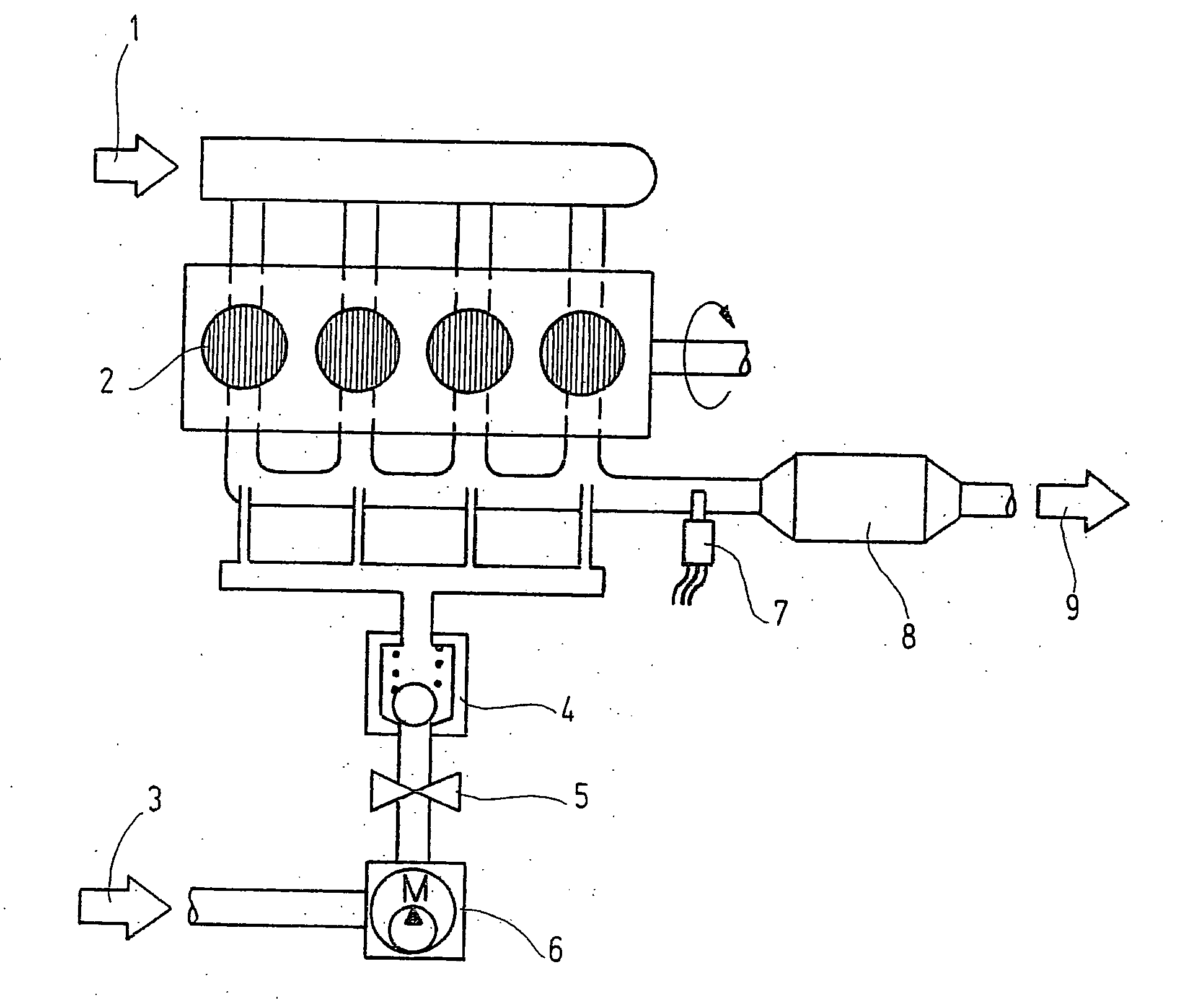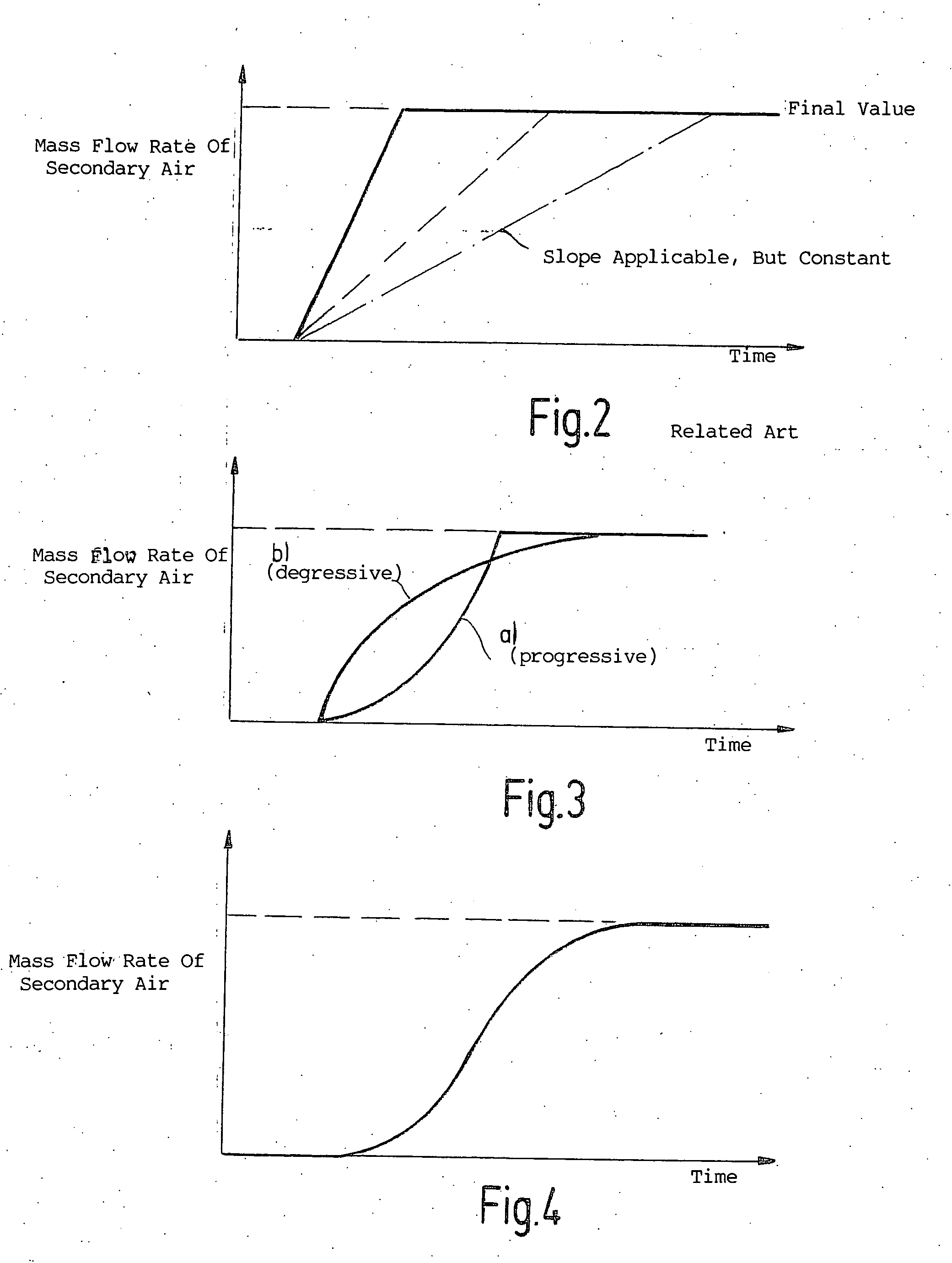Method for control secondary air amounts
a secondary air and amount technology, applied in the direction of electrical control, machines/engines, mechanical equipment, etc., can solve the problems of conversion rate, secondary air is not adaptable to the heating progression of the catalytic converter, afterburning of hot exhaust gas, etc., and achieve the effect of reducing the temperature level of the exhaust gas
- Summary
- Abstract
- Description
- Claims
- Application Information
AI Technical Summary
Benefits of technology
Problems solved by technology
Method used
Image
Examples
Embodiment Construction
[0019] An internal combustion engine 2 having a secondary-air injection system is described below in connection with FIG. 1. Internal combustion engine 2, which is supplied intake air 1, has an oxygen sensor 7 situated in the exhaust-gas duct, as well as a catalytic converter 8, which should operate at a conversion rate that is as optimal as possible, in order to prevent harmful exhaust-gas components in exhaust gas 9. Internal combustion engine 2 is supplied secondary air 3 by, e.g., an electric, secondary-air pump 6, which feeds the secondary air through a secondary-air valve 5 and a one-way valve 4, directly after the combustion chamber of internal combustion engine 2. The injection of additional air directly after the combustion chamber results in the afterburning of the hot exhaust gas. The “exothermic reaction” occurring in this context reduces, on one hand, the amount of the exhaust-gas components, hydrocarbons (HC) and carbon monoxide (CO), and heats, on the other hand, the ...
PUM
 Login to View More
Login to View More Abstract
Description
Claims
Application Information
 Login to View More
Login to View More - R&D
- Intellectual Property
- Life Sciences
- Materials
- Tech Scout
- Unparalleled Data Quality
- Higher Quality Content
- 60% Fewer Hallucinations
Browse by: Latest US Patents, China's latest patents, Technical Efficacy Thesaurus, Application Domain, Technology Topic, Popular Technical Reports.
© 2025 PatSnap. All rights reserved.Legal|Privacy policy|Modern Slavery Act Transparency Statement|Sitemap|About US| Contact US: help@patsnap.com



